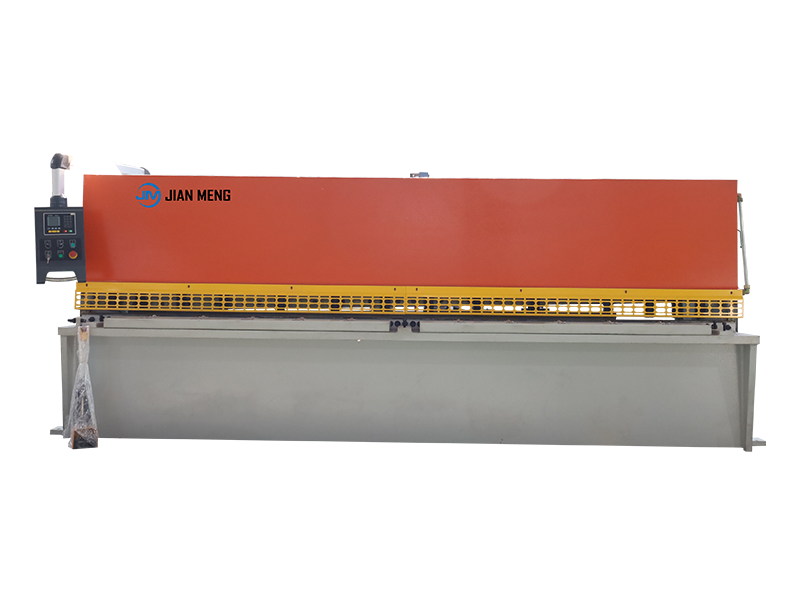In metal furniture and cabinet manufacturing—where dimensional consistency (per ISO 8062 Tolerance Class IT8–IT9), production throughput, and structural integrity (per EN 14411 for metal furniture) directly determine market competitiveness—groove machines (encompassing CNC grooving systems, horizontal groovers, and gantry slotting machines) have evolved into mission-critical production assets. Unlike manual routing or generic cutting tools, these specialized systems are engineered to address the unique demands of furniture/cabinet fabrication (e.g., tight joint tolerances, high-volume repeatability, and material diversity), delivering technical and operational advantages that directly translate to measurable business value. Below is a technically precise, industry-aligned breakdown of their core benefits:
1. Unmatched Dimensional Precision for Critical Joints & Fit
Metal furniture and cabinetry depend on grooves for load-bearing structural connections (e.g., dovetail joints for drawer boxes, rectangular slots for panel-to-frame assembly) and aesthetic alignment (e.g., edge grooves for trim integration). Groove machines deliver sub-millimeter precision that manual processes (reliant on hand marking and routing) cannot replicate, anchored by advanced mechanical design:
- CNC grooving systems: Equipped with servo-driven linear guides (backlash ≤0.002mm) and high-precision spindles (radial runout ≤0.005mm), these systems achieve dimensional tolerances of ±0.02mm for groove width/depth—critical for ensuring hermetic fits between metal cabinet panels (eliminating gaps >0.1mm that compromise water resistance in kitchen cabinets or visual uniformity in commercial furniture).
- Gantry slotting machines: For large-format components (e.g., stainless steel kitchen island frames), these machines maintain groove parallelism across 2m lengths within 0.03mm/m, preventing assembly misalignment that would reduce structural load capacity (per BIFMA X5.9-2021 standards).
This precision directly reduces rework rates from 15–20% (manual tools) to 2–3% (groove machines) and cuts material scrap by 70–80%, lowering non-conformance costs and improving first-pass yield (FPY) to >97%.
2. Dramatically Improved Production Efficiency & Throughput
In high-volume furniture/cabinet manufacturing, cycle time per part is a primary cost driver. Groove machines optimize efficiency through three key mechanisms, aligned with lean manufacturing principles:
- High-speed, material-matched cutting: CNC groovers operate at feed rates tailored to material properties: 5–15 m/min for GB/T 700 Q235 mild steel (1–3mm thick, HB 150–180) and 8–20 m/min for ASTM B209 6061-T6 aluminum (2–5mm thick, HB 95–110)—60–75% faster than manual routing (max 2–3 m/min). For example, a single CNC groover processes 120+ metal cabinet side panels (each requiring 4 linear grooves) per hour, vs. 30–40 panels with two manual operators.
- Automated workflow integration: Modern CNC groove machines interface with Manufacturing Execution Systems (MES) and automated material handling (e.g., robotic sheet loaders/unloaders), enabling lights-out production (24/7 unattended operation). This reduces equipment idle time by 30–40% and supports on-time delivery for large-scale orders (e.g., 500+ unit cabinet contracts for hospitality projects).
- Rapid job changeover: CNC systems store 1,000+ groove programs (e.g., 6mm-wide slots for AISI 304 stainless steel shelves, 3mm 45° V-grooves for aluminum cabinet edges), cutting setup time from 45–60 minutes (manual tooling adjustments) to 5–10 minutes—critical for high-mix, low-volume (HMLV) custom furniture production.
Metal furniture and cabinet manufacturing requires processing diverse materials and groove profiles—capabilities where generic tools fail. Groove machines excel through modular design and tooling flexibility:
- Material compatibility: Equipped with interchangeable tooling (indexable carbide inserts, ISO K10 grade, for ferrous metals; polycrystalline diamond (PCD) tools for non-ferrous alloys), they handle thicknesses from 0.8mm (thin aluminum cabinet door panels) to 10mm (heavy-duty AISI 430 stainless steel furniture frames) without compromising cut quality (e.g., burr-free edges per ISO 13715).
- Groove geometry adaptability:
- Horizontal groovers specialize in long, linear grooves (e.g., 1.8m slots for cabinet back panels) with consistent depth across the workpiece.
- Gantry slotting machines process large-format sheets (up to 2m × 4m) for custom metal furniture tops, supporting complex profiles like stepped slots for hardware (e.g., hinge mounts) or curved grooves for ergonomic handles.
- CNC models program 3D groove paths (e.g., tapered V-grooves for foldable cabinet doors) via CAD/CAM integration, eliminating the need for custom jigs.
This versatility lets manufacturers expand service offerings (e.g., from standard metal cabinets to high-end AISI 316L stainless steel furniture with decorative grooved patterns) and adapt to market trends (e.g., 2024 demand for minimalist metal kitchen cabinets with hidden groove joints).
4. Long-Term Cost Efficiency Through Holistic TCO Optimization
While industrial-grade groove machines carry upfront costs (CNC models: $15,000–$80,000; gantry slotters: $50,000–$120,000), their total cost of ownership (TCO)—including capital, labor, maintenance, and scrap—is 40–50% lower than manual alternatives over a 5-year lifecycle:
- Material waste reduction: Precision cutting slashes scrap rates from 8–12% (manual) to 2–3%. For a manufacturer using 500 tons of Q235 mild steel annually (2024 average price: $500/ton), this translates to 30–45 tons in annual material savings ($15,000–$22,500).
- Labor optimization: One CNC groover replaces 2–3 manual operators (tasks: measuring, marking, cutting), reducing annual labor costs by $40,000–$50,000 (based on $25/hour, 2,000 working hours/year).
- Low maintenance overhead: Industrial groove machines feature hardened steel frames (HRc 30–35), sealed spindle units (IP65 protection), and self-lubricating guideways, delivering an 8–12 year service life with routine maintenance (e.g., tool sharpening, quarterly oil changes). This outperforms manual routing equipment (3–5 year lifespan) and cuts maintenance costs by 60%.
5. Consistent Quality for Regulatory Compliance & Customer Satisfaction
Metal furniture and cabinetry must meet strict industry standards—requirements groove machines fulfill through process standardization:
- Regulatory alignment: Ensures compliance with:
- BIFMA X5.9-2021 (office furniture structural durability).
- ISO 9001:2015 (quality management systems).
- EN 14411:2020 (metal furniture safety and performance).
- Process repeatability: CNC systems eliminate human error (e.g., manual marking misalignment) by executing pre-programmed groove paths identically across 10–10,000 parts—critical for large-scale projects (e.g., hotel room cabinetry) where uniform appearance is non-negotiable.
- Surface finish control: High-speed spindles (10,000–20,000 RPM) and sharp tooling produce groove surfaces with Ra 1.6–3.2 μm (equivalent to N5–N6 surface finish per ISO 4287), eliminating the need for post-processing (e.g., sanding) and ensuring visible grooves meet aesthetic specifications (e.g., brushed stainless steel cabinet trim).
Consistent quality reduces customer complaints by 40–60% and strengthens brand reputation, enabling premium pricing (15–20% higher) for high-end custom furniture.
6. Enhanced Workplace Safety & Global Regulatory Compliance
Manual cutting (e.g., hand routing) poses risks of lacerations, tool kickback, and debris inhalation—hazards groove machines mitigate through safety-engineered design:
- Built-in safety features: Industrial models include:
- Emergency stop (E-stop) buttons (compliant with ISO 13850) for immediate shutdown.
- Laser safety curtains (Type 4, per IEC 61496) to contain high-speed metal debris.
- Spindle overload protection (torque monitoring) to prevent tool breakage.
- Interlocked access doors (per EN 1088) that disable operation when open.
- Regulatory compliance: Meets global safety standards, including:
- OSHA 1910.212 (Machine Guarding – General Requirements, U.S.).
- EN 12100:2010 (Safety of machinery – General principles for design, EU).
- GB 15760-2016 (Safety of woodworking machinery, China).
These features reduce workplace accidents by 70–80% compared to manual tools, avoiding OSHA fines (up to $136,532 per violation) and workers’ compensation claims.


 English
English  中文
中文  Arabic
Arabic  Russian
Russian  Spanish
Spanish  Portuguese
Portuguese  French
French  German
German  Hindi
Hindi  Thai
Thai  Vietnamese
Vietnamese  Khmer
Khmer  Italian
Italian  Turkish
Turkish  Korean
Korean  Belarusian
Belarusian 


